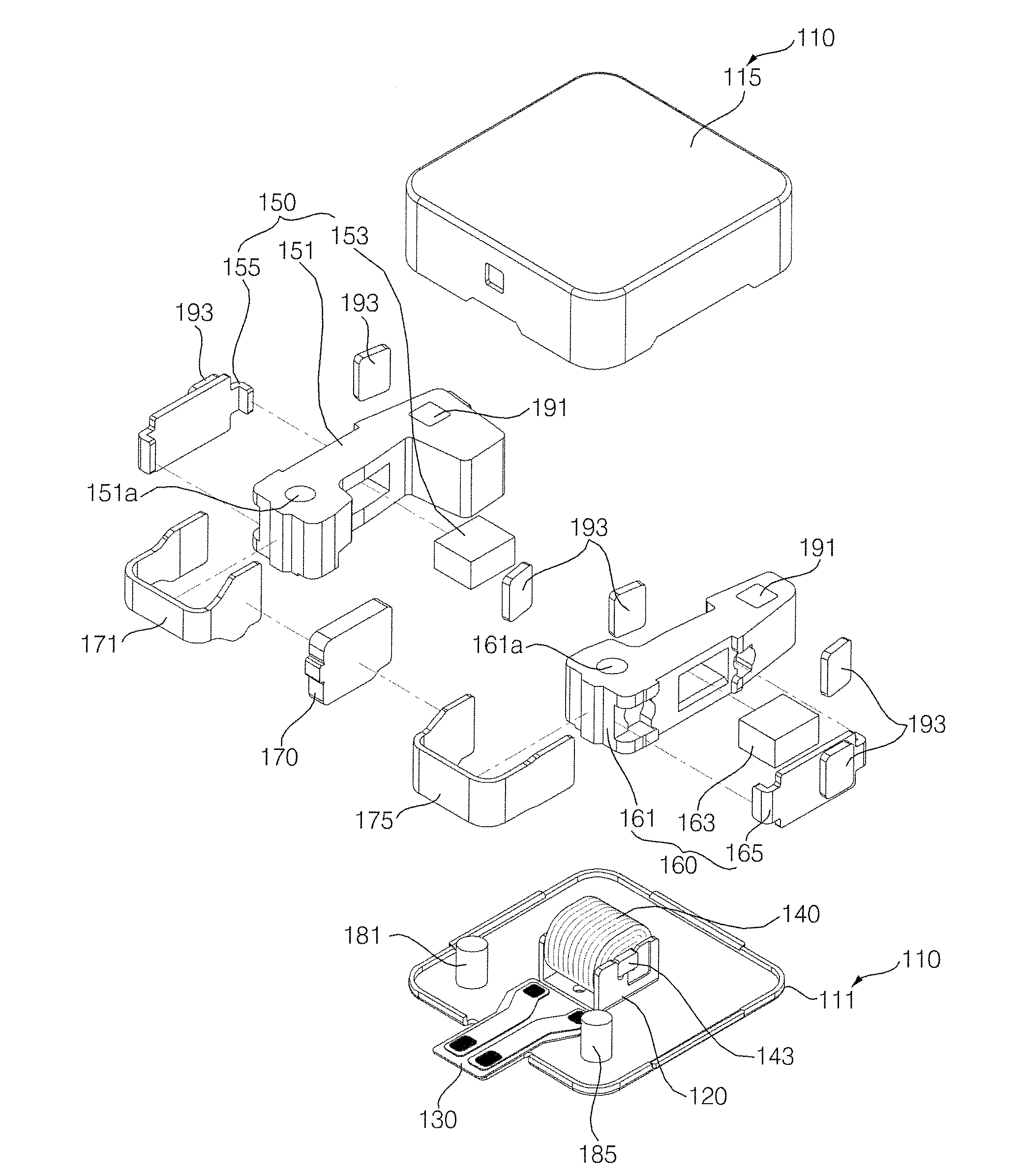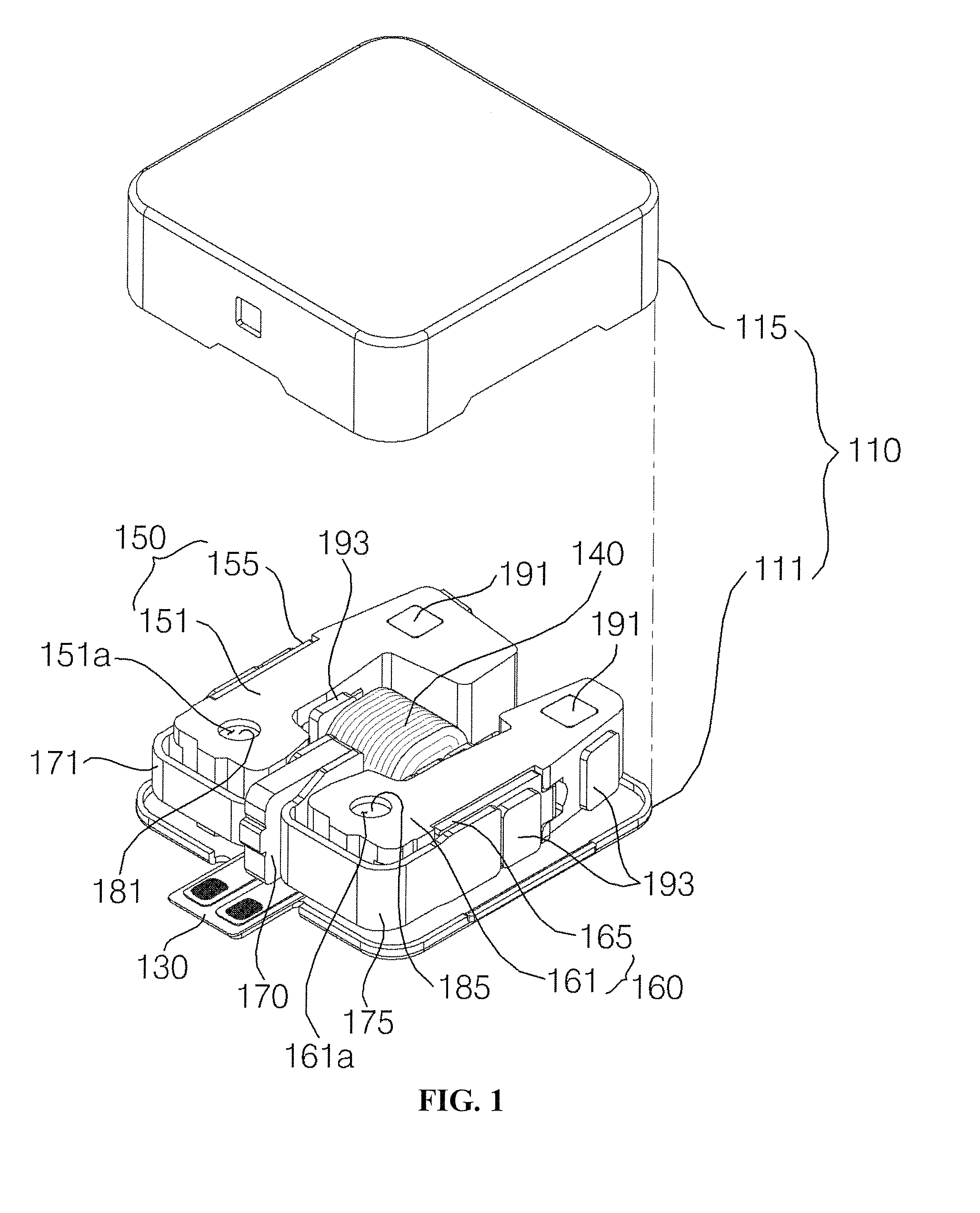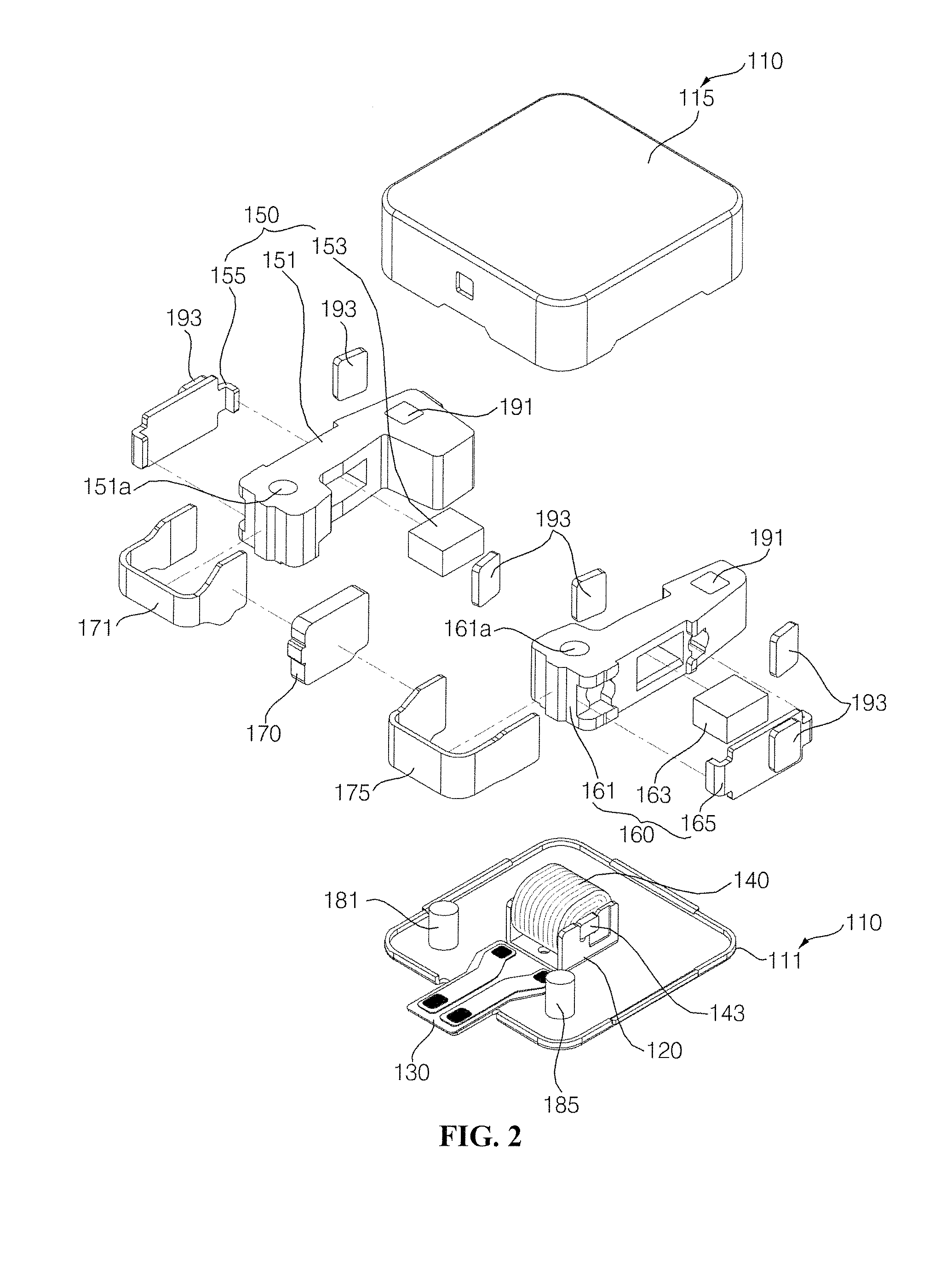Dual mode vibrator
- Summary
- Abstract
- Description
- Claims
- Application Information
AI Technical Summary
Benefits of technology
Problems solved by technology
Method used
Image
Examples
Embodiment Construction
[0025]A dual mode vibrator according to exemplary embodiments of the present disclosure will be described in detail with reference to the accompanying drawings.
[0026]The suffixes ‘module’, ‘unit’, ‘portion’ and ‘part’ may be used for elements in order to facilitate the disclosure. Significant meanings or roles may not be given to the suffixes themselves and it is understood that the ‘module’, ‘unit’, ‘portion’ and ‘part’ may be used together or interchangeably.
[0027]FIG. 1 is a perspective view of a dual mode vibrator according to an exemplary embodiment of the present disclosure, FIG. 2 is an exploded perspective view of a dual mode vibrator according to an exemplary embodiment of the present disclosure, and FIG. 3 is a plain cross-sectional view in which a case of a dual mode vibrator is removed according to an exemplary embodiment of the present disclosure.
[0028]As illustrated in the figures, the dual mode vibrator is installed at a product such as a mobile terminal, and is provi...
PUM
 Login to View More
Login to View More Abstract
Description
Claims
Application Information
 Login to View More
Login to View More - R&D
- Intellectual Property
- Life Sciences
- Materials
- Tech Scout
- Unparalleled Data Quality
- Higher Quality Content
- 60% Fewer Hallucinations
Browse by: Latest US Patents, China's latest patents, Technical Efficacy Thesaurus, Application Domain, Technology Topic, Popular Technical Reports.
© 2025 PatSnap. All rights reserved.Legal|Privacy policy|Modern Slavery Act Transparency Statement|Sitemap|About US| Contact US: help@patsnap.com



